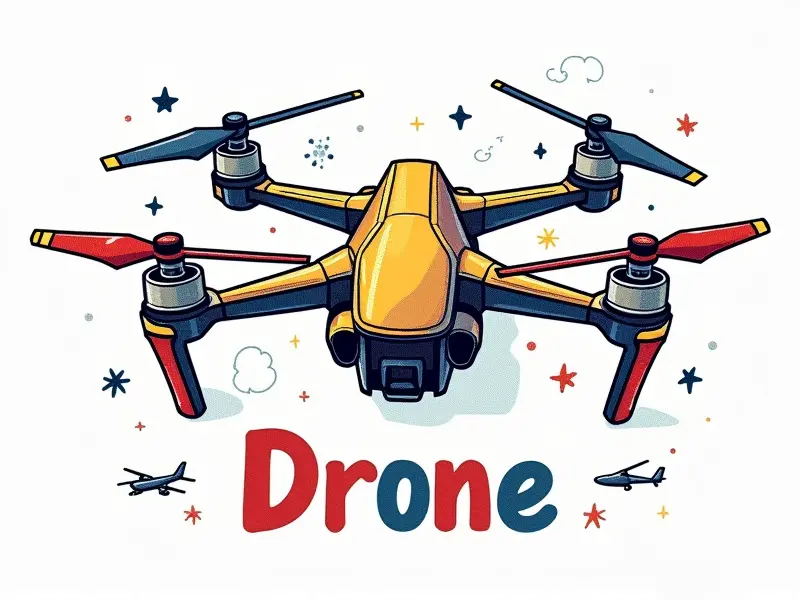What affects battery life?

How Battery Weight Impacts Flight Time
Battery weight is a critical factor in determining the flight time of drones. Heavier batteries require more energy to lift and maintain altitude, which directly impacts the overall endurance of the drone. For instance, a lighter battery pack can extend flight duration by reducing the load on motors and propellers, thereby conserving power.
When selecting a battery for your drone, it's essential to strike a balance between capacity and weight. High-capacity batteries are often heavier but offer longer flight times. Conversely, lightweight batteries may provide shorter flights but can be advantageous in scenarios where maneuverability is crucial.
Environmental Factors Shortening Drone Life
The environment plays a significant role in the performance of drone batteries. Extreme temperatures, humidity levels, and wind conditions all affect battery life. For example, high humidity can cause condensation inside the battery cells, leading to corrosion and reduced efficiency over time.
- Temperature: Cold weather reduces battery capacity by slowing down chemical reactions within the cell, while hot temperatures accelerate these reactions, causing rapid depletion of charge.
- Humidity: Excessive moisture can lead to internal corrosion and short circuits, diminishing overall performance.
- Wind: Strong winds increase drag on the drone, forcing motors to work harder and consume more power.
Voltage Drop's Effect on Quadcopter Batteries
Voltage drop is a common issue that affects quadcopter batteries during flight. As the battery discharges, its voltage decreases, which can lead to reduced motor performance and decreased lift capability. This phenomenon is particularly noticeable in high-power scenarios where rapid discharge rates are prevalent.
To mitigate voltage drop, it's crucial to monitor battery health regularly and ensure that cells are balanced properly before each flight. Using batteries with higher capacity ratings also helps maintain stable voltages throughout the flight duration.
Propeller Efficiency & Battery Drain Rate
The efficiency of propellers significantly influences how quickly a drone consumes its battery power. Propellers designed for optimal lift and thrust minimize energy loss, thereby extending flight time. In contrast, inefficient designs cause excessive drag and turbulence, leading to rapid depletion of the battery.
- Propeller Pitch: A higher pitch angle allows for greater lift but requires more power to rotate, increasing drain rate.
- Blade Count: More blades generally provide better lift but also increase resistance and energy consumption.
Aerodynamic Design Impacting Power Consumption
The aerodynamic design of a drone plays a crucial role in determining its power efficiency. Streamlined bodies reduce air resistance, allowing the motors to operate at lower RPMs while maintaining stability and maneuverability. This reduction in drag directly correlates with decreased energy consumption.
- Body Shape: Drones with sleek profiles experience less wind resistance compared to bulky designs.
- Fuselage Design: Properly shaped fuselages can channel airflow more efficiently, further enhancing performance.
Temperature Extremes and Battery Capacity
Battery capacity is highly sensitive to temperature fluctuations. Cold environments cause lithium-ion cells to become less reactive, reducing their ability to deliver full charge levels. Conversely, hot conditions accelerate chemical reactions within the battery, leading to faster discharge rates.
- Cold Temperatures: Batteries may lose up to 20% of their capacity at freezing temperatures.
- Hot Conditions: High heat can degrade internal components and shorten overall lifespan.
Charging Habits Affect Longevity of Packs
The way you charge your drone batteries significantly impacts their longevity. Overcharging or undercharging can lead to irreversible damage, reducing the number of usable cycles before replacement is necessary. Proper charging practices include:
- Fully Discharge Before Charging: Avoid partial discharges and ensure complete depletion before recharging.
- Avoid Extreme Temperatures During Charging: Charge batteries in a cool, dry environment to prevent overheating.
Flight Patterns That Wilt Drone Battery
The flight patterns employed by pilots greatly influence battery life. Frequent high-speed maneuvers and rapid ascents/descents consume power more quickly than steady-state cruising. Efficient flying techniques include:
- Straight-Line Flights: Minimize turns to reduce energy loss from changing direction.
- Smooth Ascents/Descents: Gradual changes in altitude help maintain consistent power usage.
Internal Resistance's Role in Quad Life
The internal resistance of a battery is a key factor affecting its overall performance and longevity. Higher resistance leads to increased heat generation during discharge, which can degrade cell integrity over time. Regular maintenance checks and proper storage conditions help mitigate this issue.
- Regular Testing: Use multimeters or specialized equipment to monitor internal resistance levels.
- Adequate Storage: Store batteries in a cool, dry place away from direct sunlight.
Common Culprits of RC Helicopter Battery Drains
Several factors contribute to rapid battery depletion in remote-controlled helicopters. Understanding these issues can help extend flight times and improve overall performance:
- Inefficient Propellers: Poorly designed or worn-out propellers increase drag, consuming more power.
- Motor Wear: Over time, motors may become less efficient due to wear and tear, requiring more energy for the same output.
Environmental Impact on FPV Drone Battery Life
The environmental conditions under which FPV (First-Person View) drones operate have a direct impact on battery life. Factors such as wind speed, humidity levels, and temperature extremes all play roles in determining how long a drone can remain airborne.
- Wind Speed: Strong winds increase drag, forcing motors to work harder and consume more power.
- Humidity Levels: High moisture content can cause internal corrosion and reduce battery efficiency.
Conclusion
Battery life in drones is influenced by a myriad of factors ranging from physical attributes like weight and design to environmental conditions such as temperature and humidity. Understanding these elements allows users to optimize their equipment for maximum performance and longevity. By adopting best practices in battery management, choosing efficient components, and adapting flight patterns to suit varying conditions, enthusiasts can significantly enhance the operational capabilities of their drones.

